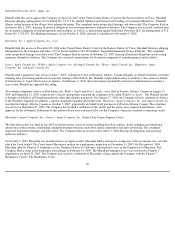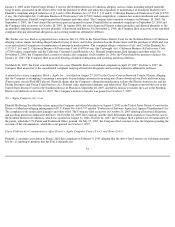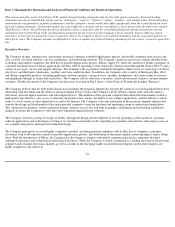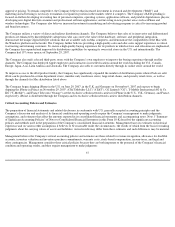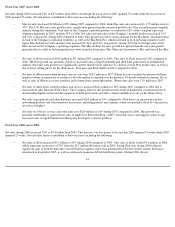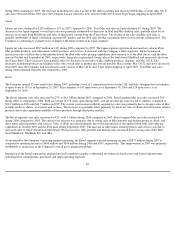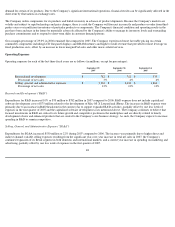Apple 2007 Annual Report Download - page 42
Download and view the complete annual report
Please find page 42 of the 2007 Apple annual report below. You can navigate through the pages in the report by either clicking on the pages listed below, or by using the keyword search tool below to find specific information within the annual report.
would be required to record additional reductions to revenue, which would have a negative impact on the Company's results of operations.
Allowance for Doubtful Accounts
The Company distributes its products through third-party distributors and resellers and directly to certain education, consumer, and commercial
customers. The Company generally does not require collateral from its customers; however, the Company will require collateral in certain
instances to limit credit risk. In addition, when possible the Company does attempt to limit credit risk on trade receivables with credit insurance
for certain customers in Latin America, Europe, Asia, and Australia by arranging with third-party financing companies to provide flooring
arrangements and other loan and lease programs to the Company's direct customers. These credit-financing arrangements are directly between
the third-party financing company and the end customer. As such, the Company generally does not assume any recourse or credit risk sharing
related to any of these arrangements. However, considerable trade receivables that are not covered by collateral, third-party flooring
arrangements, or credit insurance are outstanding with the Company's distribution and retail channel partners.
The allowance for doubtful accounts is based on management's assessment of the collectibility of specific customer accounts and includes
consideration of the credit worthiness and financial condition of those specific customers. The Company records an allowance to reduce the
specific receivables to the amount that is reasonably believed to be collectible. The Company also records an allowance for all other trade
receivables based on multiple factors including historical experience with bad debt, the general economic environment, the financial condition of
the Company's distribution channels, and the aging of such receivables. If there is a deterioration of a major customer's financial condition, if the
Company becomes aware of additional information related to the credit worthiness of a major customer, or if future actual default rates on trade
receivables in general differ from those currently anticipated, the Company may have to adjust its allowance for doubtful accounts, which would
affect earnings in the period the adjustments were made.
Inventory Valuation and Inventory Purchase Commitments
The Company must order components for its products and build inventory in advance of product shipments. The Company records a write-down
for inventories of components and products, including third-party products held for resale, which have become obsolete or are in excess of
anticipated demand or net realizable value. The Company performs a detailed review of inventory each fiscal quarter that considers multiple
factors including demand forecasts, product life cycle status, product development plans, current sales levels, and component cost trends. The
personal computer, consumer electronics and mobile communications industries are subject to a rapid and unpredictable pace of product and
component obsolescence and demand changes. If future demand or market conditions for the Company's products are less favorable than
forecasted or if unforeseen technological changes negatively impact the utility of component inventory, the Company may be required to record
additional write-downs which would negatively affect gross margins in the period when the write-downs were recorded.
The Company accrues reserves for estimated cancellation fees related to component orders that have been cancelled or are expected to be
cancelled. Consistent with industry practice, the Company acquires components through a combination of purchase orders, supplier contracts,
and open orders based on projected demand information. These commitments typically cover the Company's requirements for periods ranging
from 30 to 150 days. If there is an abrupt and substantial decline in demand for one or more of the Company's products or an unanticipated
change in technological requirements for any of the Company's products, the Company may be required to record additional reserves for
cancellation fees that would negatively affect gross margins in the period when the cancellation fees are identified and recorded.
39


